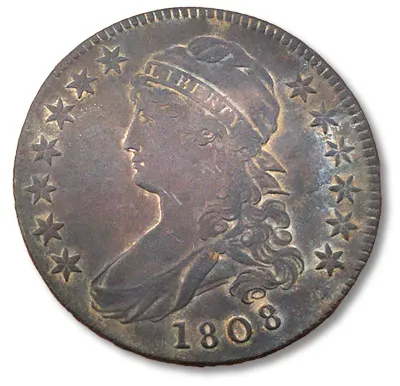- September 28, 2021
- By Liam Farrell
For the archaeologists searching for new evidence of Harriet Tubman’s family life on the Eastern Shore of Maryland, their lucky penny turned out to be a 200-year-old 50-cent piece.
Julie Schablitsky, chief of the Cultural Resources Division at the Maryland Department of Transportation and adjunct assistant professor in the UMD Department of Anthropology, and her team dug more than 1,000 holes in the swampy wilderness of Dorchester County for signs of the vanished home of the famed abolitionist’s father.

Finally, guided by 19th-century documents and an old road, they unearthed a crucial clue: a silver alloy coin minted in 1808, the same year that Ben Ross informally married Harriet “Rit” Green, Tubman’s mother.
“Wherever you have transportation, you have life and you have history,” Schablitsky said. “(The coin) gave me some energy to keep on moving and looking.”
The team’s subsequent findings—nails, brick, glass, ceramic fragments and a button all dating to the 1800s—confirmed their belief that they had discovered the site where Ross lived in the 1830s and early 1840s before moving to nearby Caroline County.
Ross was freed from slavery five years after his owner, Anthony Thompson, died in 1836 and bequeathed him 10 acres that he used to sell timber to Baltimore shipyards. Despite still being enslaved, Tubman, born Araminta Ross around 1822, lived with him there in her late teens and early 20s, and historians believe Ross passed along a familiarity with the terrain and lessons in navigation that would prove invaluable as she later made treacherous journeys to free dozens of slaves.
The discovery, located on land acquired by the U.S. Fish and Wildlife Service for the Blackwater National Wildlife Refuge, will provide new insight into Ross’s everyday life as well as Tubman’s “training ground,” Schablitsky said. Interest in the Underground Railroad conductor has recently skyrocketed due to the Black Lives Matter movement as well as the campaign to put her on the $20 bill. UMD renamed its Department of Women, Gender and Sexuality Studies in Tubman’s honor last year.
Tina Wyatt ’95, Tubman’s great-great-great-grandniece, said at an April event unveiling the finding that the new artifacts will help fill out her family history, particularly for Ross, who was also involved in the Underground Railroad and escaped Maryland with his daughter’s assistance in 1857.
“At the end of his day, did he have time to go and sit in his cabin and smoke his pipe? Sit down and contemplate what he was going to do next?” she said.
Recovered artifacts will eventually be displayed, and the discovery will be integrated into the Harriet Tubman Underground Railroad Byway—a 125-mile self-guided drive through Maryland, Delaware and Pennsylvania. The cabin site, however, will be inaccessible to the general public, principally because of frequent flooding.
Schablitsky said finding and preserving historic sites in the bull’s-eye of climate change will increasingly present challenges like this.
“It’s truly a race against time,” she said.
Topics
Research